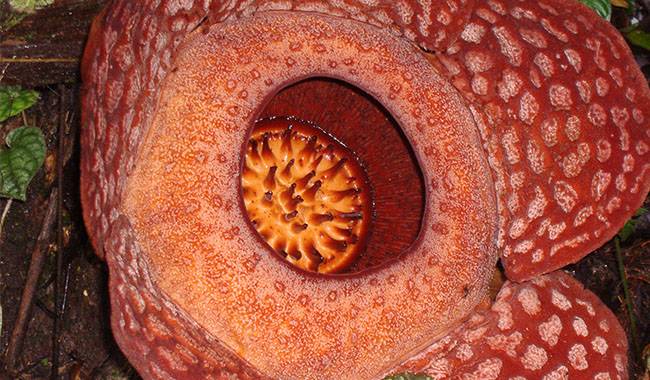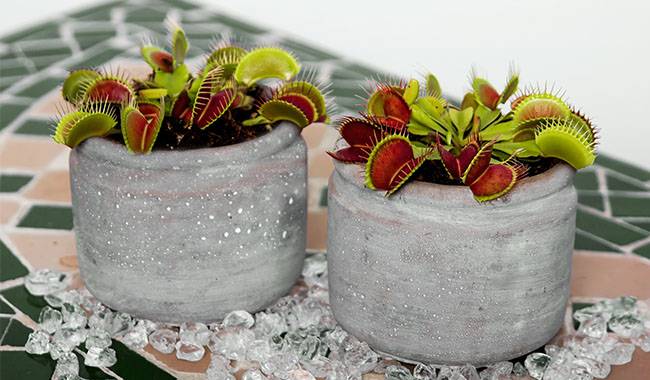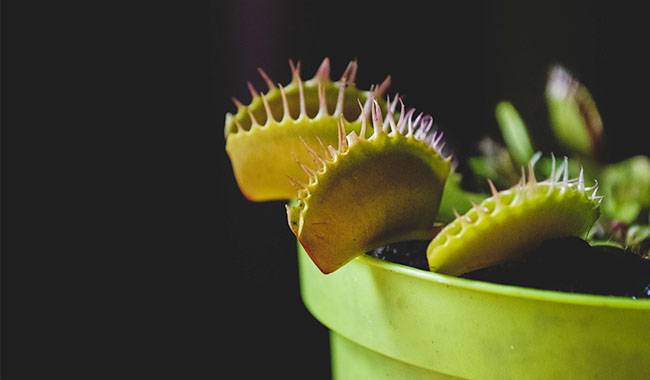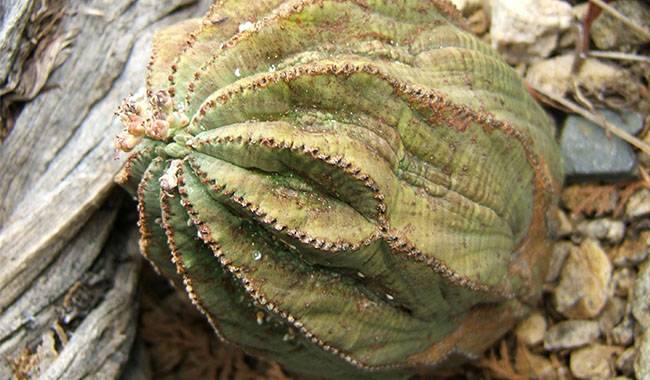What is Rafflesia (The biggest flower in the world)

Rafflesia is a Grandiflora family, which also belongs to the collective name of 20 succulent parasitic herbs. Succulent, parasitic herb, parasitic on the roots, stems, or branches of plants without chlorophyll;
The nutrient-absorbing organs degenerate into mycelium and invade the host’s tissues. The leaves degenerate into scales or nothing.
Flowers are usually solitary, radially symmetric, unisexual, dioecious, and perianths are connate. The stamens are mostly to 5, without filaments; the pistils are composed of several connate carpels;
Ovules are extremely numerous, born on the placenta of the lateral membrane, integument 1-2 layers; style 1 or none, stigma discoid, capitate or multilobed. Rafflesia is a Special plant.
The fruit is a berry; the seed is small, the seed coat is hard, and there is the endosperm.
Rafflesia is produced in tropical rain forests such as Malaysia, Java, and Sumatra in Indonesia. It is the largest flower plant in the world.
Rafflesia is locally called Bungapatma, which means “large lotus-like flower”. It is famous for its huge flowers and foul smell. It is known as the “World Kao” and is a saprophytic plant.
Rafflesia generally only blooms one flower in a lifetime.
History of Rafflesia
It is said that in 1818, the botanist Arnoldi was engaged in plant investigation and research on Sumatra Island. As opposed to the arduous life in the wild, there are surprises of new discoveries every day.
He found huge safflower at the root of a big tree. This flower aroused Arnoldi’s keen interest. He has been observing the safflower for several days.
Unfortunately, Arnoldi did not complete this study. He fell ill because of malaria and then passed away.
Later researchers carried out more in-depth research on this kind of flower in his footsteps, and in memory of this great pioneer, named this kind of Rafflesia “Ashi Rafflesia”.
On May 20, 1918, the British explorer Sir TSRafflesia wrote about the Rafflesia growing in Sumatra in his investigation report: “This is an amazing discovery…, I found it. A huge, possibly the largest flower in the world. It is graceful, magnificent, magnificent…, the diameter of the flower reaches one meter and it weighs about 7 kilograms.”
The naturalist J. Arnold, who was with Raffles, called it “the greatest wonder of the plant world” and named it Rafflesiaarnoldii.
Rafflesia only exists on the islands of Sumatra and Java. The current living conditions are not optimistic. When we search through various historical materials, we can often only see the news that its number is declining.
Some people estimate that perhaps two species of Rafflesia were extinct during World War II. Nowadays, the size and number of Rafflesia in Malaysia, Brunei, Thailand, and the Philippines are also shrinking.
American professor William Major spent a day in a scientific investigation within a 160-kilometer radius of Bataan, the capital of West Sumatra. As a result, he found only a blooming Rafflesia flower and nearby flowers in a jungle near the cultivated land. Bud, the diameter of this flower is about 70 cm.
Some people claim that in Sarawak, Malaysia, there is a mountain called Mount Kinabalu. People also call it the sacred mountain or the Chinese widow mountain. With an elevation of 4101 meters, it is the highest peak in Southeast Asia.
A long time ago, Mount Kinabalu was also known as the “home of ghosts”. This chilling name is similar to the painting style of the Rafflesia blooming on it.
An American research team published their research results related to Rafflesia is the world’s top journal “Science”. The article claimed that the ancestors of Rafflesia were an unusually strange family of ancient plants.
Unlike today’s Rafflesia, this ancient plant family is not known for the huge flowers, but on the contrary, most of its flowers are small and exquisite.
The current known early ancestors of Rafflesia may have lived in the Cretaceous period 100 million years ago. If there is a fate, perhaps the dinosaurs have met this strange plant.
In the long evolution, the greedy nature of the Rafflesia is gradually revealed. It not only promotes its own parasitic characteristics but also its flowers become larger and larger, which may have increased by 79 times.
At present, there are about 28 species of Rafflesia found in the world. Some people say that one of them is called Pulis Rafflesia is the most beautiful Rafflesia in the world. The entire flower of this flower is covered with striped white spots and bright red Against the background of the petals, these spots look very beautiful.
The appearance characteristics of Rafflesia
Rafflesia is a succulent parasitic herb and is not really a “piranha”. Their main axis is extremely short, without leaves and underground stems, and the nutrient-absorbing organs degenerate into mycelium-like, invading the host’s tissues, so the whole flower is all of it.
Almost all the nutrients absorbed from the host supply the growth of flowers, the flower diameter can reach 0.9144 meters, and the highest record can reach 1.4 meters. The base of the Rafflesia is developed from the xylem of the host, and the shape is like a wide-mouthed jar.
Succulent, parasitic herb, parasitic on the roots, stems, or branches of plants, without chlorophyll; leaves degenerate into scales or nothing.
The flowers are usually solitary, radially symmetrical, unisexual, dioecious, bisexual, and very huge (the largest flower in the world: Rafflesia arnoldii R. Br.) is about 1 meter in diameter and weighs 7.5 kg, Produces Sumatra.), the perianth is connate, lobes 4-10 or none, sparsely separated;
Male flower: Most stamens to 5, no filaments, 1-3 rows of rings grow on the stamens, or combine to form a tube in the bisexual flower, the anthers are 2 compartments, longitudinal or apical openings, and the medicinal compartments sometimes converge, and the pollen often has Stickiness, single or tetrad;
Female flower: The pistil is composed of 8-6-4 connate carpels, the ovary is inferior, semi-inferior, or superior, and the 1-chamber or placenta protrudes near the middle to form many irregular cavities; most of the ovules are born on the side On placenta, integument 1-2 layers; style 1 or none, stigma discoid, capitate or multilobed. The fruit is a berry; the seed is small, the seed coat is hard, and there is the endosperm.
The filamentous buds of the seeds can gradually spread in the bark of the stem without harming the host. Until one and a half years later, the seeds have absorbed enough energy and expanded to pierce the seed coat to germinate about 6 mm of buds.
After several months of slow growth, the flower buds gradually grew from the size of a table tennis ball to the size of a cabbage. After a month, the buds will slowly open, and it will take two days and two nights to fully bloom.
The blooming Rafflesia is gorgeous and colorful. The entire corolla is bright red with a little white spot. The corolla is 50-90 cm. The 5 succulent petals are thick and tough. Each petal is about 5 cm thick and 30 cm wide. The petal quality The total weight can be as much as 10 kg.
There is a big round honey trough in the center of the flower, its volume is quite large, can hold 5-7 kilograms of water.
The peculiarities of Rafflesia
Rafflesia is really strange. It has the reputation of being the world’s largest flower, but its growth rate is also staggering. It usually takes only a few days to grow from a small seed to a daunting behemoth. can do it.
Rafflesia is a parasitic plant, it often grows on the roots of other plants and lives by absorbing its nutrients. When the Rafflesia flower is not in bloom, it is a bit like the day lily we usually eat. Its flowering speed is not fast, and it takes about a month to truly bloom.
The flowering period of Rafflesia is not long, it will wither after two or three days. The female flower that has received the pollen will gradually form a rotten fruit within seven months.
Rafflesia does not have a green organization for photosynthesis, so although this parasitic lifestyle is very selfish from our human point of view, it is actually a very smart choice for itself. There are always all kinds of mysterious and wonderful sceneries in nature. Let us sigh the ingenuity of the creator. Rafflesia can be regarded as an example.
Although people are very curious about this parasitic phenomenon, people still do not understand its mechanism, and there are still many unanswered questions.
Professor Charles Davis, a plant biologist at Harvard University in the United States, said: “They look and smell like a pile of rotten meat, which is disgusting. We stay away from them and avoid them. As far as pollinating flies are concerned, they are all mouthwatering delicacies.”
In fact, this is exactly how Rafflesia reproduces. Its strong rancid smell will attract insects that love carrion to pollinate. Perhaps to humans, flies are just a bunch of buzzing annoying guys, but to Rafflesia, these black little guys may be really cute.
The way the seeds of the Rafflesia are spread has also aroused the curiosity of many scientists. Some botanists believe that the seeds in the fruit of the Rafflesia are helped by animals such as deer and wild boars. Host plants with damaged skin.
However, some researchers believe that squirrels may be the biggest hero. These little elves jumping from the forest not only enjoyed the delicious fruits, but also bitten the stem bark of the host. When the two cooperated, the seeds were Brought to its favorite paradise.
Of course, some other opinions are also very reasonable. For example, some researchers believe that termites and other ants may have played a big role.
Rafflesia is by no means kind. It is beautiful, coquettish, and full of temptation, but it is also full of disgusting rancid smell. Perhaps this is the plant that best represents the deep-rooted desire.






